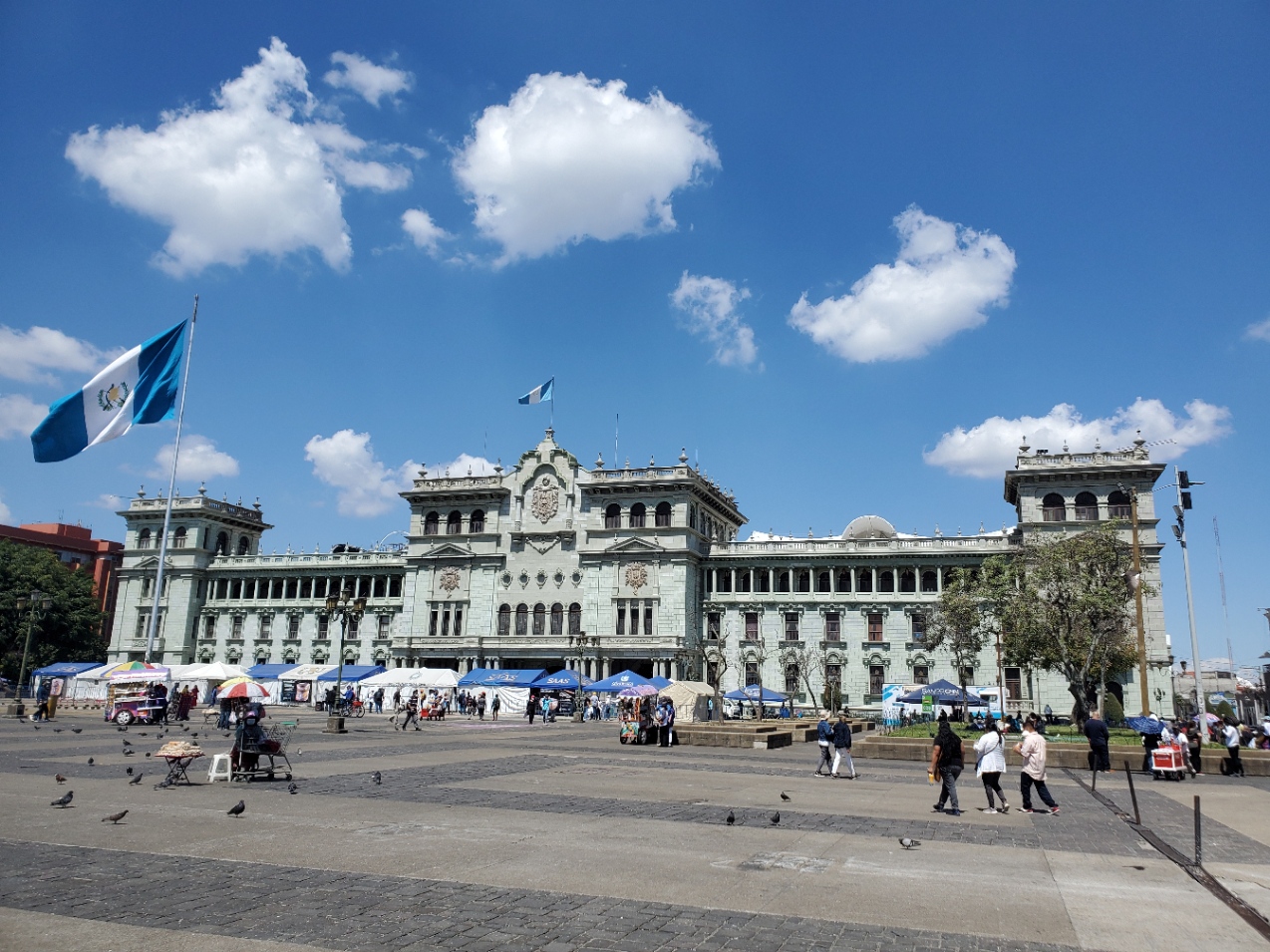Most people skip browsing cultural aspects of Guatemala City, but for the brave ones I am offering a one day itinerary to cover must see places. It is impossible to understand the intricacies of the place having only 24 hours, so here I am attempting my best to sum up the interesting and intriguing places to visit.
One day itinerary sum up
- Place 1 Central Market
- Place 2 Metropolitan Cathedral
- Place 3 Cultural Palace
- Place 4 Hill of Carmen
- Place 5 Che Guevara’s favorite bar in Guatemala City
- Place 6 Stroll on 6th Avenue
- Place 7 Relief Map
As I mentioned in my Travel Resources page I like to take a free walking tour on the first day of being in a country. This helps to get essential tips, areas to avoid, and not to miss museums to from a local. The first day can be dedicated visiting the historic center of the city, which is located in Zona 1. My recommendations to reach out to Christian Lopez with Ixim Tours as your guide. He’ll take you around and explain the historical and cultural aspects of the city and the country.
Our tour started at the 8th street, previously known as Merchant’s street. During Colonial times this calle was packed with novelty stores, first-class restaurants, and luxury hotels. The place is interesting with the fact that 8th street divides the city from north to south and the neighboring 6th avenue cuts it from West to East. Today this street leads to the local Central Market. On the way there I was surprised to see small herd of goats. And no, they weren’t for sale, but rather their byproduct was – the milk. And yes, in Guatemala City you can have fresh (can’t be fresher) goat milk, literally milked minutes ago. No kidding.
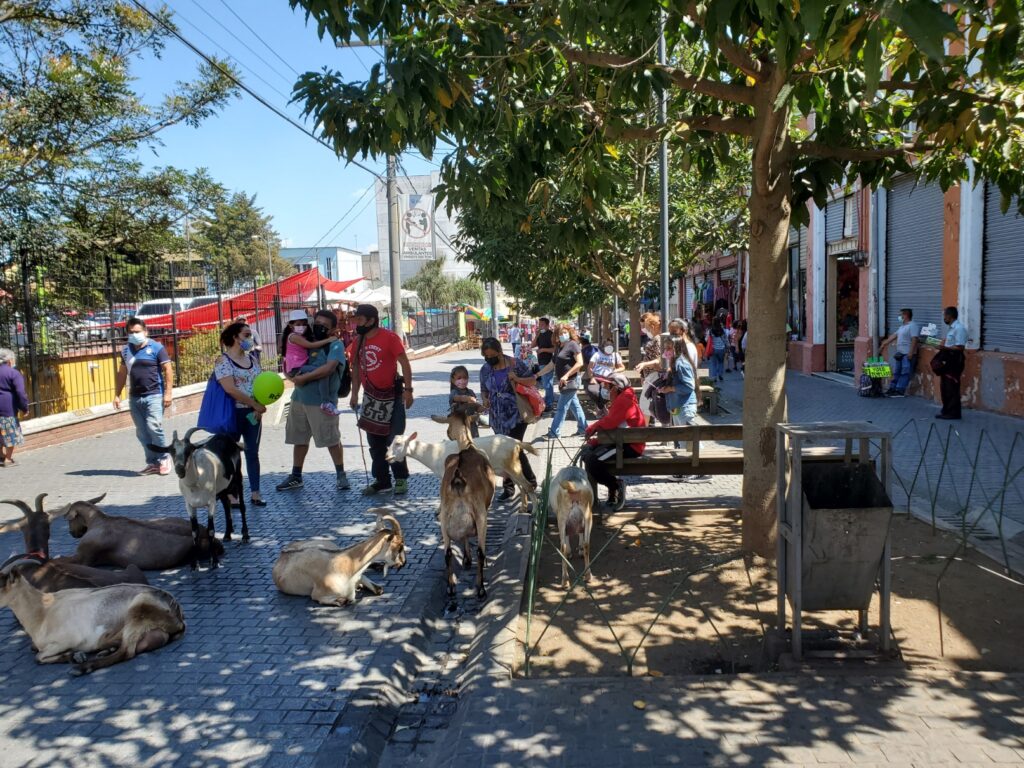
Our first stop was Mercado Central, the Central Market. The bustling place where tourists can find everything. We really liked the Comedor (eatery) where people from different regions cook their traditional food. Some of the “restaurants” reminded us someone’s kitchen. Definitely check out the interesting stall of Doña Mela, the local celebrity.

For nice pictures visitors can check out the Artizan Plaza located a minute away from the market. The sculpture of water jars from Chinautla have become the symbol of the local artisan craft and popular among locals and tourists. Our next place, which is around the corner is the Metropolitan Cathedral. The construction began in 1782 but was fully completed and opened its doors in 1815. Currently it is the seat of Archbishop of Guatemala and considered the main Catholic church of the city. It hosts the cultural heritage dated from the 16th century in the forms of sculptures, paintings, and silver objects.
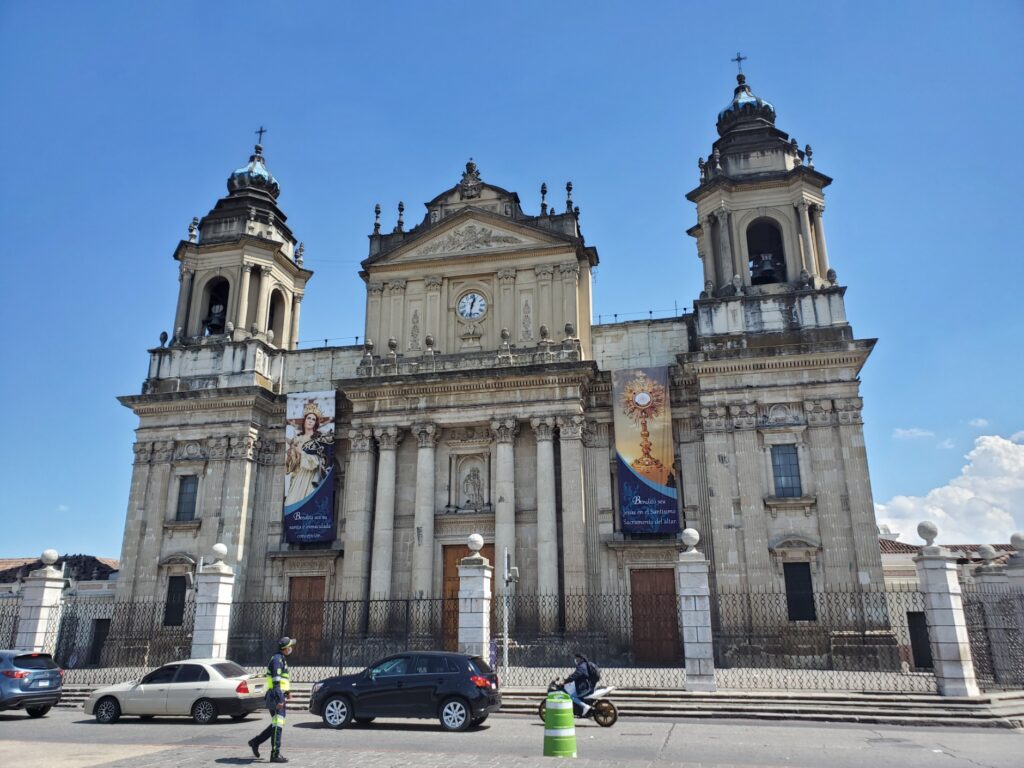
Religious art lovers can enjoy the Triunfo de la Eucaristía sobre la Ignorancia by Pedro Ramírez. To appreciate art one doesn’t need to go to El Prado. The painting was ordered by the bishop for vestry (a praying room in church) and finished in 1673. Popular religious motif of the time was inspired by the works of Peter Paul Rubens who’s pieces now adorn world-known art museum of Madrid.
Our next stop was the National Palace of Culture or locally known as Aguacate Palacio (for the light greenish color). Completed in 1943, it is the architectural symbol of the capital. Historically known as “Central America’s Napoleon”, dictator Jorge Ubico (1878-1946), who compared himself with Hitler, was obsessed with number five. He personally was involved in designing the building, hence there are many hidden signs of this number all around the palace. Ironically he spent there only 11 months, being overthrown by the October Revolution (Here you go Russia! You are not the only one to marked by this historical term). At the entrance attentive tourists can find a Zero Kilometer plaque, serving as a starting point for all roads in the country. The Palace of Culture offers tours, although they might be only in Spanish. I highly recommend visiting the place, which embodies architectural, historical, and artistic achievements of modern Guatemala.
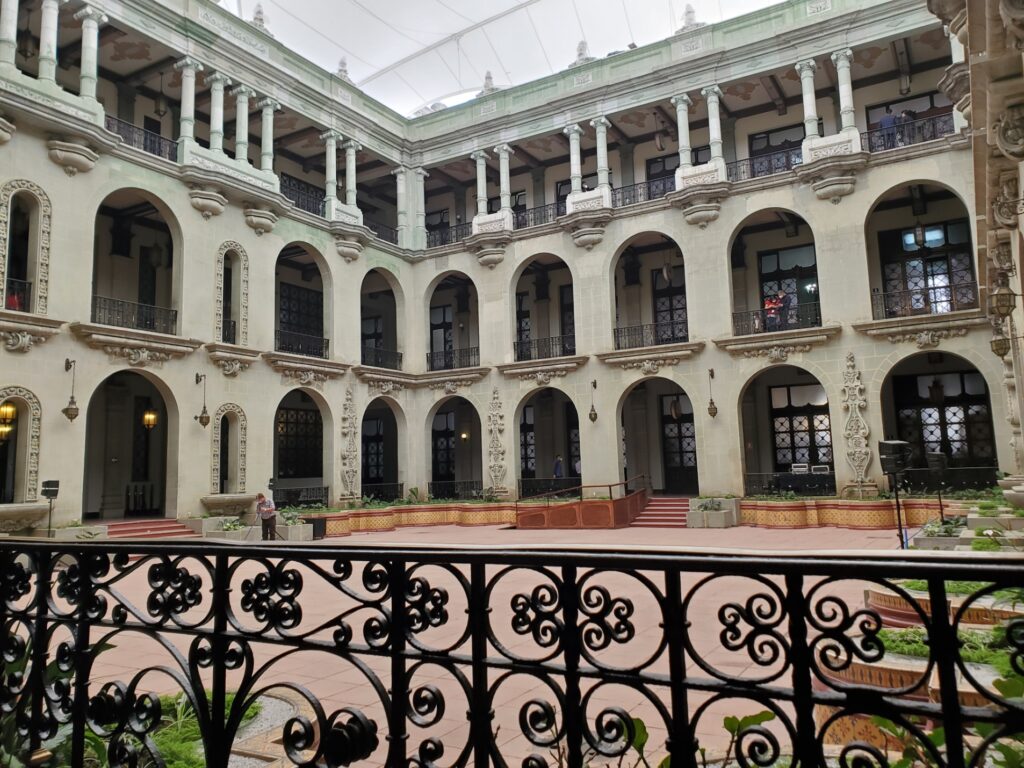
Right across the Palace, in Pasaje Rubio is hidden Che Guevara’s favorite bar. Curious to see the results of the ongoing land reform the revolutionary decided to settle down in the city so as to “perfect himself and accomplish whatever may be necessary in order to become a true revolutionary”. “El Portal” is the traditional bar where weary of walking tourists can find an oasis in the form of cold beer. Don’t skip on trying cervezas mixtas (mixed tap beers)
Since we are talking about beverages wanted to share a traditional Guatemalan drink – suchiles, which is some sort of kvass/kombucha type of a refreshment. While some find the taste a little odd, in the essence it is simply fermented drink made from fruits, ginger, or rice. It reminded me of my Colombian adventures and the taste of chicha, which you can read in this article
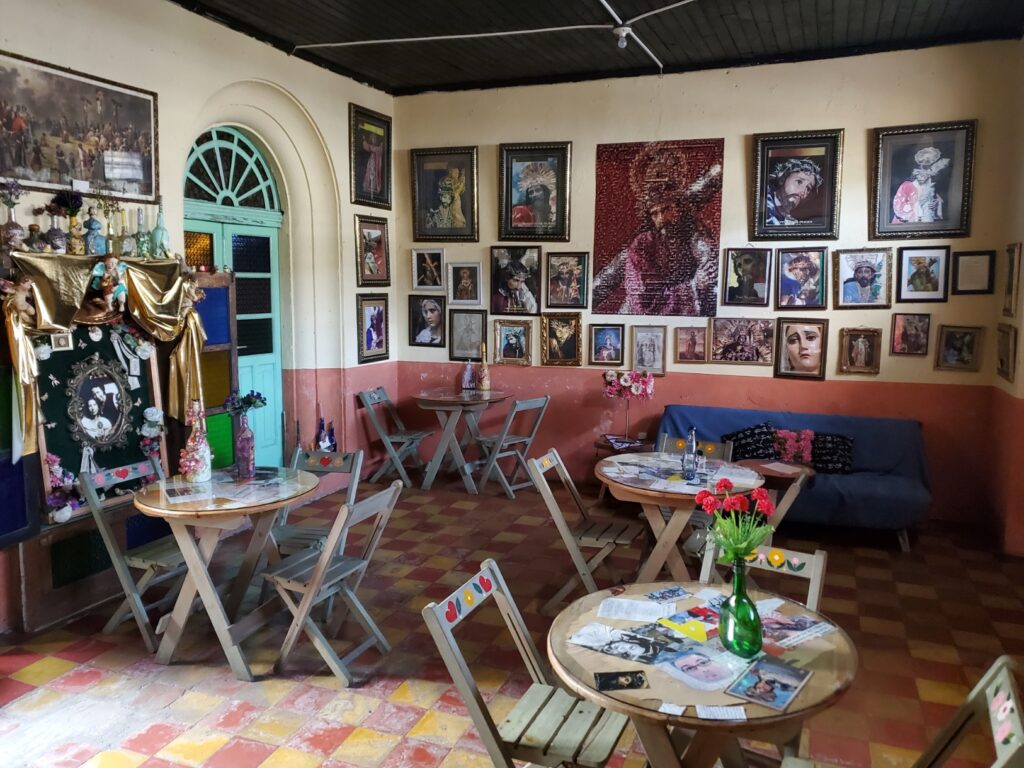
Fully understand the hustle and bustle of the most populous city in Central America one needs to stroll on 6th Avenue, or Avenida Sexta. This pedestrian street offers all kinds of vendors, restaurants, cafes, markets, and some picturesque building along the way. Sometimes media distorts the objective state of things, to some extent it’s true regarding safety in Guatemala City. The city was divided on 22 zones or Zonas by local civil engineer in 1947 and since then is used in navigating the streets. Zona 10 is the safest zone, 4, 9, 11, 12, 14, 15, and 16 are fairly safe. The historic center is located in sketchy Zona 1, during the day light tourists can feel safe here. No go Zones are 3, 5, 6, 7, 8, 12, 17! The airport is located in Zona 13, which is OK during the day.
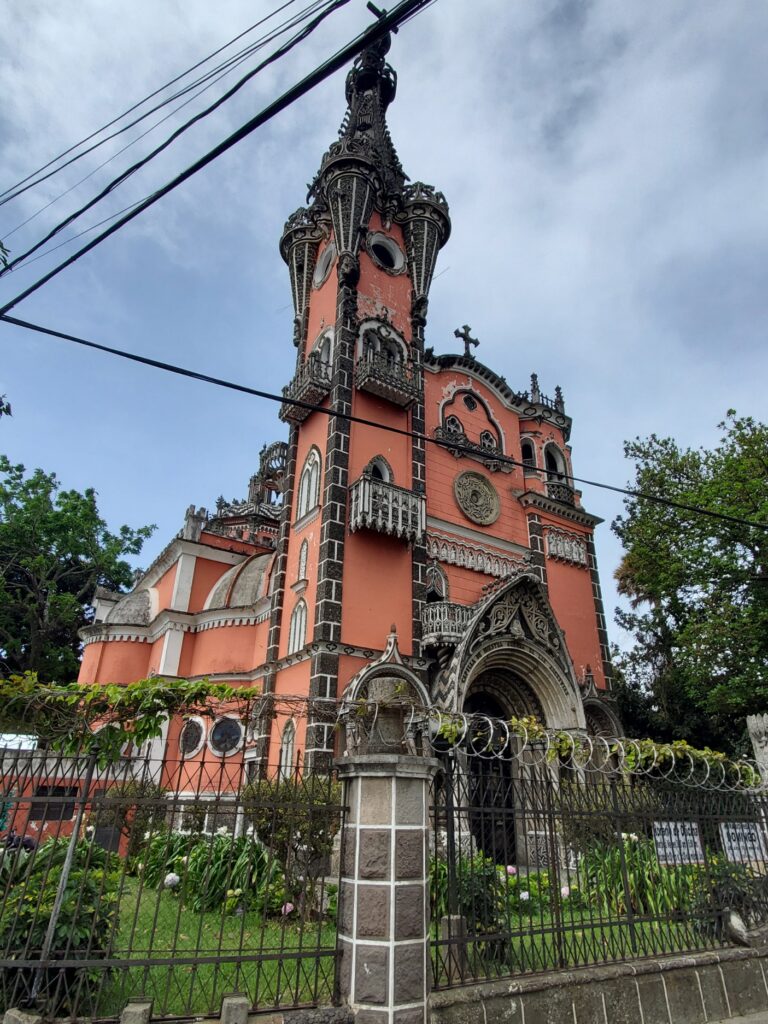
A short drive away is Relief Map of the city. Very informative place to see the country’s size, geography and location of the towns. A good place to get an idea of the highlands, mountains, volcanoes and beaches which constitute the country. Mathematically speaking the scale of the map is of 1:10,000 kilometers. The Relief Map was built more than 100 years ago during Manuel Estrada Cabrera’s presidency (1898-1920). The monument purpose was to teach all Guatemalans about the country’s topography. It was declared Cultural Heritage of the Nation due to its complexity and effort spent building it.
Here traveler can visit the Sonorous Forest as well. The place offers a collection of more than 100 hormigo trees, which wood is used in the construction of the marimba(national musical instrument).
Topography is graphic representation of the surface features of a place or region on a map, indicating their relative positions and elevations.
The last activity for the day is Our Lady of Carmen Catholic Church which is roughly 20 minutes away from the historic center. Located at the top of the “Hill of Carmen“, the place marks the very first church and the place from where modern Guatemala City had evolved. Te history of the Cerrito del Carmen is closely linked to that of the founding of the Guatemalan capital. Built around 1620 the place was reconstructed several times due to multiple earthquakes.

